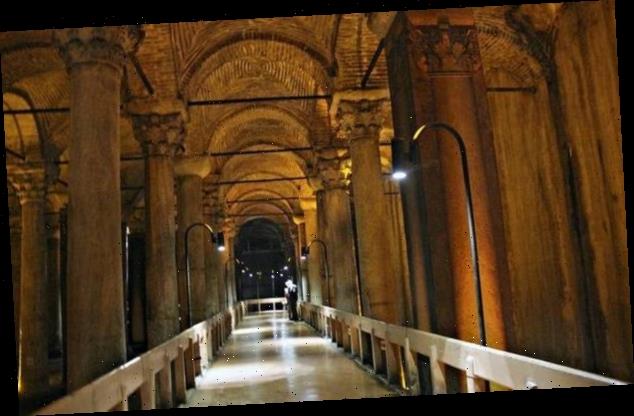The Basilica Cistern in Istanbul stands out for its symmetry and sheer stateliness of conception. By Chitra Ramaswamy
A surreal atmosphere is all-pervasive as we enter Cistern Basilica, a masterpiece and the largest surviving palatial cistern of the Byzantine Empire in Istanbul. A forest of 336 columns, each measuring 9m in height, is reflected in the water of the subterranean marvel, claimed to be the world’s oldest cistern. It was built in 532 AD during the reign of Justinian I, to store fresh water for the palace and its neighbourhood.
The technology of building aqueducts and giant cisterns to transport water has been a key gift of Rome to the world and history of architecture. The Big Basilica Cistern, nicknamed Yerebatan Sarayi, or ‘The Sunken Palace’, is an engineering marvel based on brick and concrete, and blends architectural aesthetics. Its symmetry and sheer stateliness of conception are awe-inspiring.
The mammoth structure was built under a large public square, the Stoa Basilica, after which it came to be named. History records that about 7,000 slaves were involved in its construction. We access the tank by descending 52 steps from the surface. A seemingly endless set of columns greets us as we view its interior from the landing. We walk along raised wooden platforms that run the length of the tank, water dripping in places from its roof, and shoals of multi-coloured fishes swimming in its waters.
336 marble columns
Thick walls (4.8m) run along the length and breadth of the underground structure which is a rectangle measuring 138 m by 64 m. The roof of the edifice is characterised by round arches and cross-shaped vaults, held aloft by 336 marble columns, organised in a gridiron layout comprising 12 rows of 28 columns each. The walls of the tank are plastered to the beginning of the arch. The columns themselves have been salvaged from ruined monuments of a crumbling Roman empire, and exhibit fine Doric, Ionic and Corinthian sculpted capitals. The floor of the tank, which has a capacity of 100,000 cu.m, is made of brick and covered with mortar to ensure it is impervious.
Guides point out to one distinct column with engraves images that resemble eyes and tears. The tears supposedly symbolise the tribute paid to the hundreds of slaves who lost their lives during the construction of the cistern. An integral crowd-pulling feature of the cistern are twin columns, the bases of which have the head of Medusa, one of the three Gorgon sisters, female monsters in underground realm. While one of them is arranged upside down, the other faces sideways.
Since its original construction, the cistern complex has undergone restoration thrice – in 1723, in the 19th century and between 1985-87. A tranquil respite and perfect escape from the scorching summer heat, the underground edifice is a visual delight for history and architecture buffs. With special light and sound effects, in addition to being a frequented tourist spot, the cistern serves as venue for various concerts.
Source: Read Full Article
